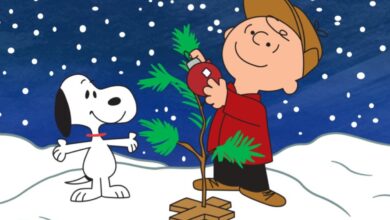Bee Gees’ “To Love Somebody” Bridges Soul and Pop with Timeless Elegance in 1967
When the Bee Gees released “To Love Somebody” in the summer of 1967, they introduced the world to a song that would transcend genres, cultures, and generations. Crafted during a time when the band was still carving its path, the track became a cornerstone not only of their catalog but of popular music itself. Though it initially peaked at No. 17 on the Billboard Hot 100 and No. 41 in the UK, its real achievement lay in its emotional power and lasting influence, which extended far beyond the charts.
The Bee Gees—Barry, Robin, and Maurice Gibb—had traveled a long and winding road before reaching international fame. Born on the Isle of Man and raised in Manchester before moving to Australia, the brothers honed their harmonies and songwriting through years of performing on local radio and television. Their distinct blend of voices, anchored by Barry’s warm, expressive lead, set them apart from other emerging groups of the era. By 1967, with their return to England, they were ready to show the world they were more than just a pop act—they were songwriters of rare depth and feeling.
The origins of “To Love Somebody” carry a fascinating twist. Written by Barry and Robin Gibb, the song was originally intended for soul legend Otis Redding, who had expressed admiration for the Bee Gees after meeting them through mutual industry contacts. Barry, envisioning Redding’s voice soaring over the track, penned the song as a heartfelt ballad filled with yearning and devotion. Tragically, Redding passed away later that year before he could record it, but the Bee Gees’ own version would take on a life of its own.
The recording of “To Love Somebody” took place at IBC Studios in London, with producer Robert Stigwood overseeing the session. The arrangement leaned heavily into a soul sensibility, with swelling strings, a subtle horn section, and a gentle but insistent rhythm. Barry’s vocal performance was nothing short of masterful—aching, restrained, yet powerful—conveying an emotional honesty that few songs of the time could match. The production struck a delicate balance, polishing the song for pop radio without sacrificing its deep well of feeling.
Upon its release, “To Love Somebody” received strong critical acclaim, though its chart performance was somewhat modest compared to the blockbuster hits that would come later in the Bee Gees’ career. Nevertheless, the song resonated profoundly with listeners who were drawn to its sincerity and its seamless blend of soul, pop, and R&B influences. It also marked the Bee Gees’ first significant impact in America, a market that would later become central to their success.
Culturally, “To Love Somebody” arrived during a period of enormous musical and social change. In 1967, the “Summer of Love” was in full swing, with psychedelic rock and folk music dominating the airwaves. Yet the Bee Gees chose a different path, offering a soulful ballad that spoke to universal emotions of love, loss, and longing. In doing so, they expanded the emotional palette of pop music, paving the way for more introspective and heart-driven songwriting in the years to come.
The success of “To Love Somebody” opened new doors for the Bee Gees, particularly in the United States. It helped position them as serious artists with songwriting prowess that rivaled the era’s best. The song’s sophisticated craftsmanship and emotional weight gave them the credibility to experiment further, setting the stage for the remarkable evolution their music would undergo throughout the 1970s.
Beyond its immediate impact, “To Love Somebody” had a lasting influence on the development of pop-soul and soft rock. Its seamless integration of soul styling into a pop framework became a model for countless artists. In many ways, the song predicted the rich, genre-blending productions that would define the singer-songwriter movement and the adult contemporary sound of the following decades.
Over the years, “To Love Somebody” has been covered by a staggering array of artists across multiple genres. Roberta Flack, Nina Simone, Michael Bolton, and Janis Joplin, among others, each offered their own interpretation of the song, bringing out different shades of its emotional core. No matter the arrangement, the strength of the composition always shone through, a testament to its timelessness.
At the time of its release, the Bee Gees themselves were navigating personal changes and the challenges of sudden fame. The emotional vulnerability captured in “To Love Somebody” reflected not just the universal human experience but also the brothers’ own feelings of displacement and yearning as they sought to define themselves in an unfamiliar industry landscape.
Today, “To Love Somebody” stands as one of the Bee Gees’ most enduring works. It continues to receive significant radio play, features prominently in movie and television soundtracks, and has been immortalized on countless greatest-hits compilations. Its elegant simplicity, emotional directness, and genre-defying brilliance have ensured its place in the pantheon of classic songs.
The song’s influence on modern music can be seen in the way it broke down genre barriers, blending soul, pop, and R&B into a cohesive whole. It taught producers and artists that heartfelt songwriting, strong melodies, and emotional sincerity could triumph across any musical style—a lesson that continues to echo in today’s industry.
The Bee Gees would go on to greater fame with the disco era of the late 1970s, but many fans and critics alike point to “To Love Somebody” as one of their purest artistic achievements. It represents the heart and soul of what made the Gibb brothers special: their ability to write songs that speak directly to the human condition, with melodies that linger in the heart long after the last note fades.
Ultimately, “To Love Somebody” endures because it captures something eternal—the aching, sometimes overwhelming beauty of loving someone completely. In just a few tender minutes, the Bee Gees managed to articulate a feeling that transcends time, genre, and generation. More than half a century later, the song still feels fresh, vital, and profoundly moving—a true masterpiece that continues to teach the world what it means to love.





